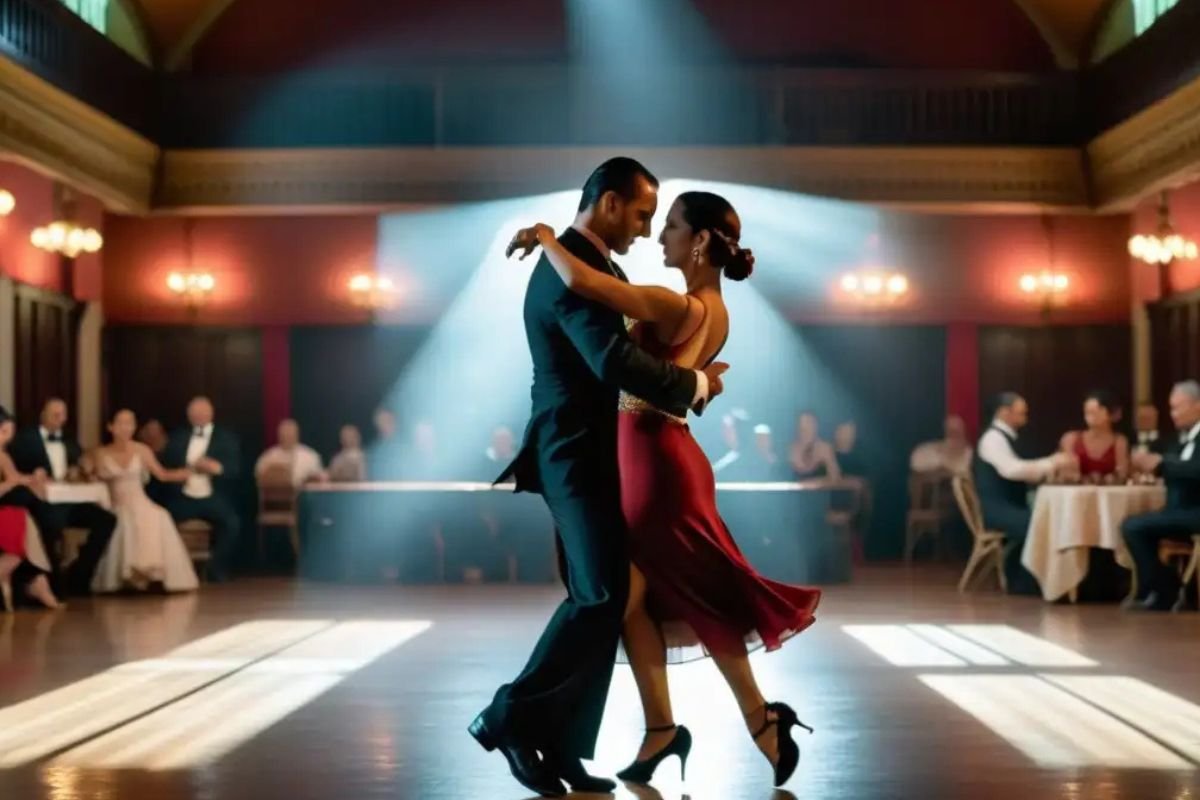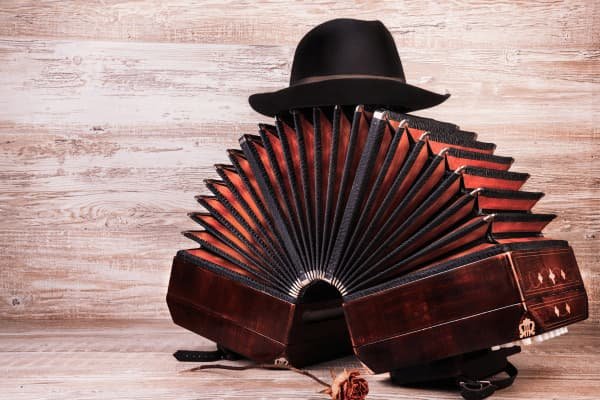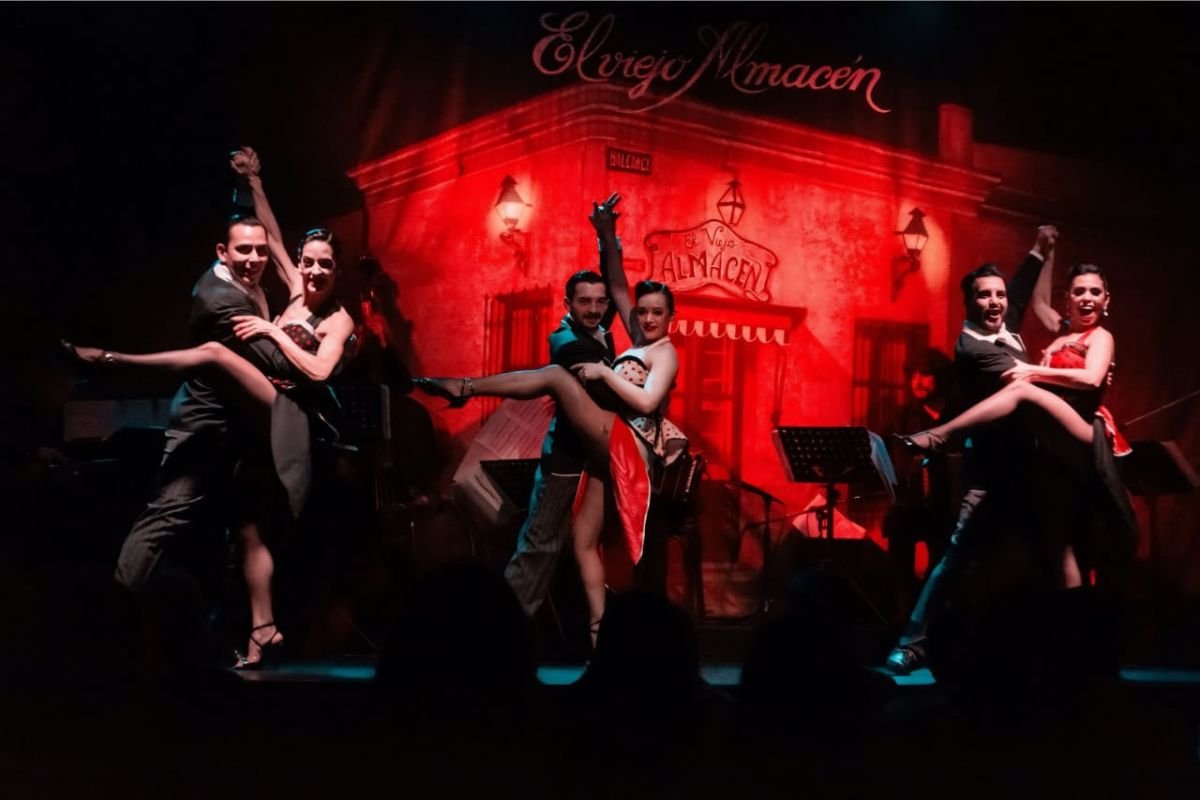
Tango in Buenos Aires: The Living Soul of the Porteño City
A classic of tradition and sensuality that captivates the world, this is Tango in Buenos Aires: The Living Soul of the Porteño City.
It’s impossible to talk about Argentina without mentioning the famous Tango in Buenos Aires: The Living Soul of the Porteño City. It’s much more than a musical genre or a dance style; it’s an essential part of the country’s cultural identity. Born in the humble neighborhoods of Argentina’s capital in the late 19th century, tango has grown into a global phenomenon, preserving its authenticity and profound connection to human emotions.
National Tango Day is celebrated on December 11, established in 1977 to commemorate the birthdays of two of tango’s most important figures, Carlos Gardel and Julio De Caro. If you’re interested in learning more about this dance, stay with us! We’ll share its history and the most popular spots to enjoy a show and learn its steps.
The Origin of Tango: A Fusion of Cultures
Tango emerged in the late 19th century in the slums of Buenos Aires during a time of significant European immigration. These immigrants brought their music, customs, and culture, which fused with local traditions and African influences. Tango is a unique blend of sounds and instruments from Europe, Africa, and Latin America, featuring a rhythmic base with African roots, the musical structure of the waltz, and the rhythm of milonga.
The port of Buenos Aires, a hub of cultural exchange, played a fundamental role in tango’s development. The lyrics of early tango songs reflected the pain, nostalgia, and struggles of immigrants and the working class, creating a deep emotional connection for those who danced and listened.
The Evolution of Tango
Initially, tango was not accepted by the upper classes of Buenos Aires. It was considered a vulgar dance practiced in the outskirts, with brothels being its main venues. However, as the genre spread throughout the city, it began to gain popularity among a broader audience.
In the 1910s, tango reached Europe, particularly Paris, where it was enthusiastically received. This international acclaim led the upper classes of Buenos Aires to change their perception, embracing tango as an integral part of Argentine culture. Soon, tango music and dance became symbols of national identity, attracting locals and tourists alike.
The 1930s, known as the “Golden Age of Tango,” saw significant growth and refinement in the genre. Composers like Carlos Gardel, Aníbal Troilo, and Juan D’Arienzo elevated tango with more complex and sophisticated arrangements. Gardel, in particular, became a global icon of tango, admired not only for his singing talent but also for his charisma and tragic early death, which turned him into a legendary figure.
The Milonga: The Heart of Tango
Beyond being a musical genre and rhythm, milonga is also the place where tango is danced and remains the core of tango culture in Buenos Aires. While academies and theaters offer opportunities to learn and observe tango, milongas provide an authentic experience of tango culture—a gathering place for both experts and beginners to dance and share their passion.
In a milonga, the atmosphere is informal but guided by rules and codes, such as the famous “cabeceo”—a discreet signal between dancers to invite each other to the dance floor. Milongas can be found in various Buenos Aires neighborhoods, with San Telmo, Almagro, and Palermo being some of the most popular for tango enthusiasts.
Styles of Argentine Tango
Did you know there are different styles of tango? Here are the five most popular tango styles:
- Tango Canyengue: Also known as Tango Orillero, this is the oldest style, danced in the early 20th-century neighborhoods. It features a closed “V” stance, without crossing, with short steps and bent knees. It’s characterized by elaborate embellishments and figures.
- Milonguero: Defined by the “apilado” posture, where the upper bodies of the partners remain in constant contact. The couple’s position doesn’t change, even during ochos or turns. Its rhythm is faster than other tango styles.
- Salon Tango: A social style, making it one of the least dramatic. It’s perfect for improvisation, requiring creativity to dance. It combines various social dance styles, such as Villa Urquiza, milonguero, and club-style tango.
- Tango Nuevo: The most flexible style, incorporating elements from other dances like swing and salsa. It features fluid movements and figures.
- Show Tango (Fantasia): Known as stage tango, this style is seen in exhibitions, competitions, and performances. It combines various rhythms and genres, requiring significant preparation and practice.
Key Tango Destinations in Buenos Aires
If you visit the country’s capital, there are certain places you must explore to immerse yourself in tango. Check out our top 16 places to see tango shows in Buenos Aires, ideal spots to enjoy spectacular performances.
Don’t know how to move to the rhythm? No problem! These are the best schools to learn tango dancing.
Curious about tango attire? Don’t worry—there are plenty of places to buy tango clothing and shoes in Buenos Aires.
And if you’re looking for more than just a show, enjoy a delicious meal with rhythm at these restaurants featuring tango shows in the Argentine capital.
Argentine Tango Today
Despite global cultural changes, tango remains a vital part of Buenos Aires’ cultural life. While its music and dance have evolved, tango has adapted to modern times without losing its essence. Today, tango is practiced not only in Argentina but also worldwide, with tango festivals held in cities like New York, Paris, and Tokyo.
In addition to traditional milongas, contemporary forms of tango, such as tango electrónico, popularized by bands like Gotan Project, have broadened its appeal to younger generations of dancers and musicians.
You can experience this art in these places to see street tango in Buenos Aires and witness talented street performers showcasing their skills.
Tango in Buenos Aires: The Living Soul of the Porteño City is more than a dance or musical style—it’s a way of life that has shaped the city’s cultural identity. For visitors, experiencing tango is a way to connect with the heart and soul of Buenos Aires. Whether attending a milonga, a show, or watching street performers, you’re invited to feel the passion and artistry that define Argentines. Let yourself be seduced by its rhythm and join the dance!






